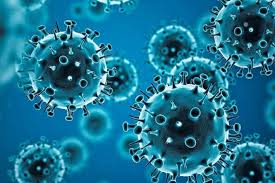Coronary heart disease (CHD) is a leading cause of death around the world. CHD is also known as coronary artery disease or ischemic heart disease.
Information about coronavirus and heart disease.
Coronary heart disease symptoms (CHD)
The following are the most common symptoms of coronary heart disease:
* chest discomfort (angina),
* shortness of breath,
* pain all over the body,
* feeling faint, and * feeling ill (nausea)
However, not everyone experiences the same symptoms, and some people may not experience any at all before being diagnosed with coronary heart disease.
Coronary heart disease causes (CHD)
Coronary heart disease is a term that defines what happens when a build-up of fatty substances in the coronary arteries blocks or interrupts your heart’s blood flow.
The walls of your arteries can become furrowed with fatty deposits over time. The fatty deposits are known as atheroma, and the process is known as atherosclerosis.
Atherosclerosis is caused by lifestyle factors such as smoking and consuming excessive amounts of alcohol on a regular basis.
If you have high cholesterol, high blood pressure (hypertension), or diabetes, you’re more likely to develop atherosclerosis.
Detecting and diagnosing coronary artery disease (CHD)
A risk assessment may be performed if a doctor believes you are at risk for coronary heart disease.
They’ll ask you questions about your medical and family history, as well as your lifestyle, and collect a blood sample.
To prove coronary heart disease, additional tests may be required, such as:
* a treadmill test
* a radionuclide scan
* a CT scan
* an MRI scan
* coronary angiography
Learn more about the methods used to detect coronary heart disease.
Treatment of coronary artery disease (CHD)
Although coronary heart disease cannot be cured, therapy can help manage symptoms and minimize the risk of complications like heart attacks.
Treatment may include:
* changes in lifestyle, such as regular exercise and quitting smoking; and
* medications.
* angioplasty – a procedure that involves the use of balloons and stents to repair narrowed heart arteries
* surgery
Coronary artery disease prevention (CHD)
By making a few simple lifestyle modifications, you can lower your chances of developing coronary heart disease.
These include:
* eating a nutritious, well-balanced diet
* staying physically active
* quitting smoking
* keeping blood cholesterol and sugar levels under control
Other health benefits of maintaining a healthy heart include lowering your chances of stroke and dementia.
The Heart
The heart is a fist-sized muscle. It circulates blood throughout your body at a rate of 70 beats per minute.
After leaving the right side of the heart, blood travels to your lungs, where oxygen is taken in.
The oxygen-rich blood returns to your heart, where it is pumped through a network of arteries to the body’s organs.
Blood is pushed back to your lungs from your heart via veins. Circulation is the name for this procedure.
The coronary arteries, a network of blood vessels on the surface of the heart, provide the heart with its own supply of blood.
source: NHS
